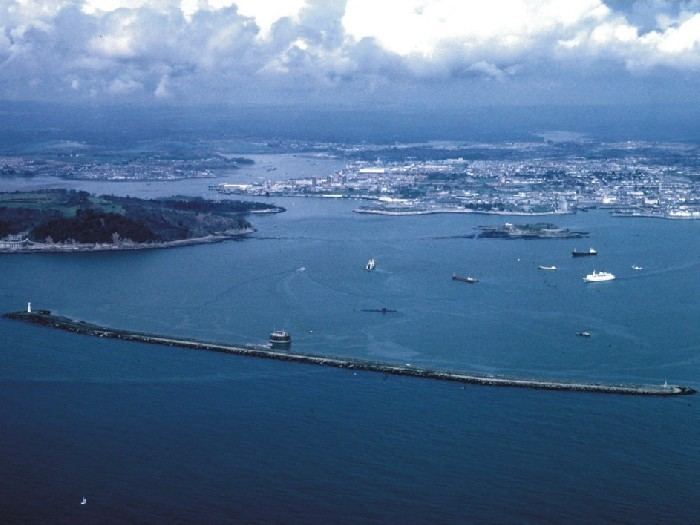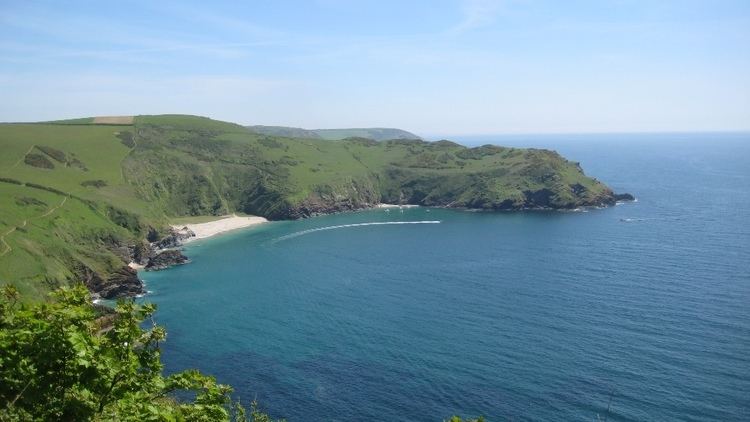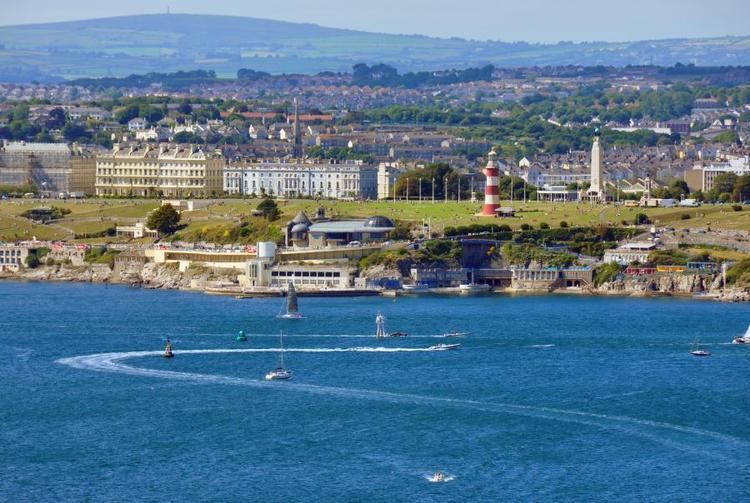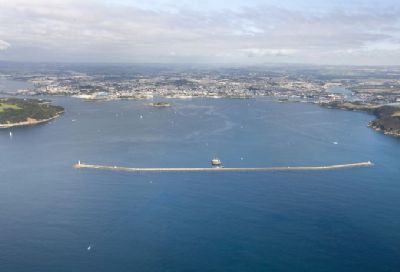 | ||
Similar Plymouth Hoe, Smeaton's Tower, National Marine Aquarium, Saltram House, Burrator Reservoir | ||
Yacht havens plymouth sound
Plymouth Sound, or locally just The Sound, is a bay on the English Channel at Plymouth in England.
Contents
Its southwest and southeast corners are Penlee Point in Cornwall and Wembury Point in Devon, a distance of about 3 nautical miles (6 km). Its northern limit is Plymouth Hoe giving a north-south distance of nearly 3 nautical miles (6 km).

The Sound has three water entrances. The marine entrance is from the English Channel to the south, with a deep-water channel to the west of the Plymouth Breakwater. There are two freshwater inlets: one, from the northwest, is from the River Tamar via the Hamoaze and Devonport Dockyard, the largest naval dockyard in western Europe. The other, at northeast, is from the River Plym disgorging into its narrow estuary, Cattewater harbour between Mount Batten and the Royal Citadel.

In addition to ships of the Royal Navy, large commercial vessels, including ferries to France and Spain use the Sound from Millbay Docks. Fishing vessels use it from Sutton Harbour beside the old town of Plymouth, called the Barbican. There are marinas at Sutton Harbour, Mount Wise in the Hamoaze and at Turnchapel. Waterborne traffic in the Sound is controlled by the Queen's Harbour Master for Plymouth.

In the centre of the Sound, midway between Bovisand Bay and Cawsand Bay, is Plymouth Breakwater, which creates a harbour protecting anchored ships from the frequent south-western storms. The breakwater is around 1,700 yards (1,600 m) long, stands in around 11 metres / 36 feet of water and was built by John Rennie and Joseph Whidbey starting in 1812. The breakwater has a 23-metre-tall (75 ft) lighthouse on its western end and a 9-metre-tall (30 ft) beacon with a spherical cage on top at the eastern end. It is said that the cage is a lifesaving device designed to keep wrecked sailors from drowning in the huge waves of a storm on the low-lying breakwater.

Drake's Island is 400 metres long and around 100 metres wide and situated at the north of the Sound. It was fortified to defend Drake's Channel, the only deep-water route to Devonport. The Bridge is a shallow reef that links Drake's Island and the Cornish mainland. At low water the depth of the Bridge can be less than one metre but at high water it can rise to 5 metres. In World War I this natural barrier was supplemented by other obstructions to prevent submarines and small ships attacking the naval base.

Mount Batten, a former Royal Air Force flying boat and search and rescue base, is located at the northeast corner of the Sound. T. E. Lawrence was stationed here as Aircraftman Shaw.

Over the years, the Sound has been defended by Drake's Island, Picklecombe Fort, Cawsand Fort, the Breakwater Fort, Fort Bovisand, Staddon Fort and Stamford Fort.
A harbour and reservoir were built at Bovisand before the fort existed to supply men-o-war anchored in the Sound with fresh water. Joseph Whidbey supervised the building of the Breakwater from Bovisand Lodge, from which there is a view down the full length of the breakwater.
The Titanic was supposed to have docked here briefly on its return voyage to Britain, and the ship had a painting of Plymouth sound on board.
Plymouth sound kayaking dolphin
Notable events
The Sound has been the site of a number of aircraft crashes and shipwrecks:
